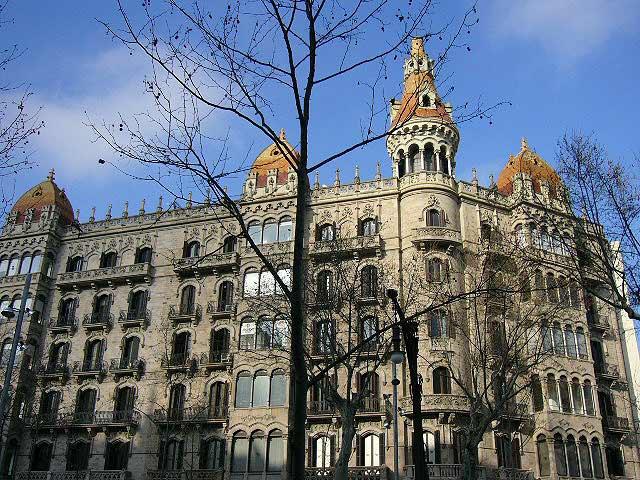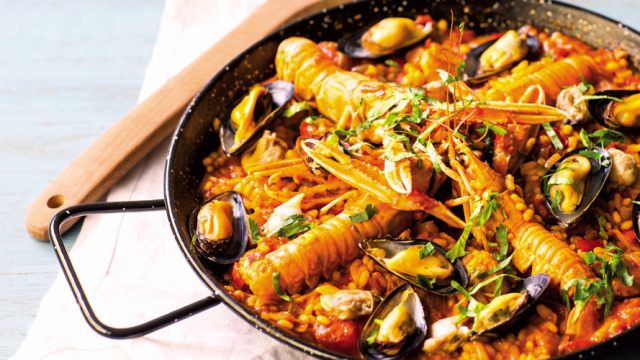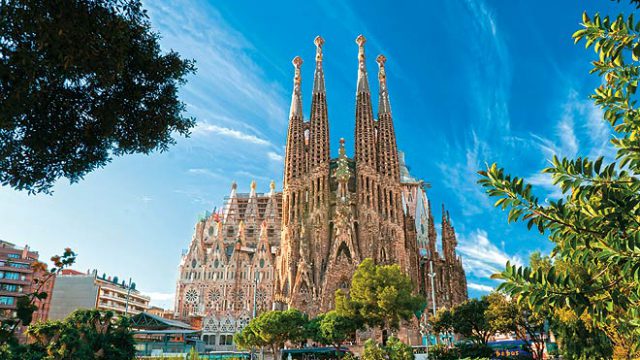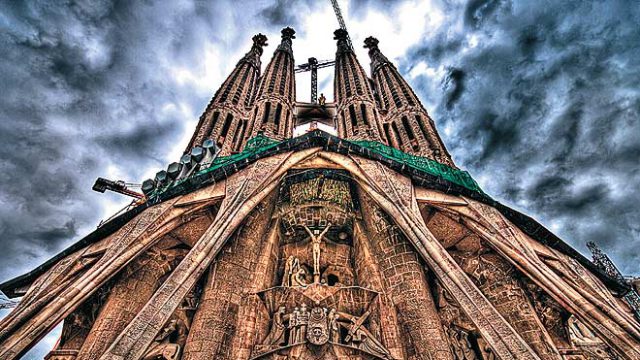There is only one person in Barcelona who really matters. Absolutely matters. Finding him is easy. Walking
Almost 90 years after his death, Antoni Gaudí is the one people come to see; he and his work are intertwined to a degree where the two cannot be thought of separately even for a moment. His creations are like nothing else in the world; indeed, it appears they are not of this world. But in truth, this greatest of modern architects was inspired by all the elements of nature around us.
Synonymous with the city, he has left his magic touch on everything – from towering structures to tiny mosaic figurines. Yet, a new arrival here quickly figures out one thing: all this talk of Gaudí vacuums up the attention, leaving little to spare for the other fabulous aspect of the city, which is the leisurely lavishness of its life, infused with fine tastes.
Barcelona – affectionately shortened to “Barca” by locals – is the capital of Catalunya (or Catalonia), the wealthiest region of Spain, with a good life to match, and its residents know how to make the most of it. There is plenty going on by way of commerce, but hardly anyone barks instructions into smartphones; people go to work, but a stroll past lunching crowds makes it seem that afternoons were invented for a long, al fresco meal and a glass of sangria. The buzzing high streets offer every on-season fashion collection under the sun, but the residents are innately stylish rather than trend victims. Even on a weekday, just a few minutes from the major thoroughfare of Passeig de Gracià, dozens of pavement cafés in the district of L’Eixample have patrons sitting with a coffee, the sun on their back, showing no sign of that stroke-inducing mania of ‘getting things done’. This charm of a lifestyle built on savoured moments is very typically Spanish, though Catalans do not identify themselves with the rest of the country; an independence referendum is due in 2014.
The open-air culture of the city thrives in massive public spaces such as the park around the Arc de Triomf (yes, Barca has one, too) and the popular beach, and also in the merry little playgrounds dotting the pavements.
Above all, Barcelona is a visual treat – the whole city centre is a showcase of the magnificent Catalan modernist architecture. Basilica de la Sagrada Familia (Church of the Holy Family), which brings tourists from all over the world pouring into this city, is its most-recognised symbol. Rising over the city skyline, it is visible from a distance, but that gives one no idea of its close-range impact, which hits with jaw-dropping force – I was not the only one; almost everyone feels that, as one glance reveals.
Even to those without an iota of interest in religion, the basilica is a magnet. People return again and again to stand outside and marvel at the details on its two façades. The Nativity façade (front walls) is a part of Gaudí’s original work, showing scenes of the birth of Christ, the three wise men coming to the holy family, the massacre of the infants of Bethlehem; the Passion façade (back walls) is more recently built, showing scenes of the crucifixion, Christ bearing the cross, then impaled on it. The angularity and bareness of the Passion façade conveys pain and austerity, in stark contrast to the flowing lines and overwhelming sculptural features on the Nativity façade. Inside, the church pillars rise like tree trunks, forming complex patterns on the ceiling as in a leafy forest canopy. The mosaic panes on the windows take the art of stained glass to an extraordinary level.
Mosaic tiles are Gaudí’s signature, used everywhere in Casa Batlló (pronounced Ba-yo), a private residence now managed as a tourist attraction, and in Park Güell, a free-to-use multi-layered public space visited daily by hundreds. Casa Batlló is inspired by marine life, both mythical and real. Park Güell partly draws on the zodiac. Gaudí’s trademark undulating surfaces and lines are seen to their best effect in La Pedrera (Casa Mila), an incredible structure that appears to be rippling like water. In all his works, he uses strong, contrasting colours with abandon, a major feature of the post-modern art movement that the Catalan great influenced.
A short stay in Barcelona is not enough to absorb all that the city has to offer in art. The Picasso museum here chronicles the evolution of the artist’s style from realism to cubism, his works from the Blue Period (1901-1904), his ceramics and the richness of his commercial creations. (His most famous painting, Guernica, is in Madrid.) Then there are the museums dedicated to Joan Miró and Salvador Dalí, the pre-eminent Catalan artists.
Like many European capitals, central Barcelona is best enjoyed on foot or on bicycle. One of my pleasurable activities on Passeig de Gracià was to people-watch from a pavement café, taking in the vista of gorgeous buildings before which small groups gathered on benches under trees. Casa Batlló and La Pedrera are both on this street, very helpfully within minutes of each other.
This thoroughfare ends in Plaça de Catalunya, an enormous circle dominated by statues, fountains, pigeons and impromptu picnickers. From here starts La Rambla, the famous pedestrian district steeped in Barca charm. A walk straight down this long, tree-lined, traffic-free stretch will take you to the sea; taking any of the left turns will lead you into Barri Gòtic, the well-preserved, maze-like old quarters. On some days, a makeshift artisans’ market is set up here, displaying beautiful samples of local craftsmanship.
In the evening, La Rambla glitters like a jewel. The day ends late in the city – even close to midnight, a fair number of diners remain in the cafés. This allows visitors to do the tapas crawl to their heart’s content. In Spain, the best tapas culture is believed to be in Madrid, where several taperias still honour the tradition of supplying free finger food with drinks; Barcelona is not so generous, but still has tapas bars everywhere in Barri Gòtic that serve up small, tasty portions at mouth-watering prices. I walked into Taperia Princesa, within a hop, skip and jump of Museu Picasso, to sample the Spanish staple patatas bravas (potato fries in a spicy sauce). The verdict: skip it and try something more adventurous, as this European version of “spicy” barely leaves an impression on the Indian palate. I had underestimated the sangria – its hold was much stronger than expected. But no matter. Being unsteady on my feet was simply an excuse to lean back on a bench and drink in more… of Barcelona.
The information
Getting there
Flight tickets from Indian metros to Barcelona are at present in the region of Rs 50,000 or more. Look for flight + hotel combo deals as they can mean significant savings. A web search showed us an eight-night package of return flights (ex-Delhi) + hotel (one-star, standard double room) for Rs 78,650 per person.
When to go
Though in sunny Spain, Barcelona is very close to the Pyrenees mountain range, so it can get much colder than you expect in a Med country. March onwards, it is quite pleasant. However, the city is a round-the-year destination. September has a four-day festival, Festes de la Mercè, honouring one of the city’s patron saints, Nostra Senyora de la Mercè (Our Lady of Mercy). The citywide festival includes a swimming race, a fun run, free concerts and cultural events, plus parades featuring colourful ‘giants’.
Where to stay
If staying about a week, consider a serviced apartment for an affordable central location, plus facilities such as kitchenette and a proper dining area that a small hotel room would not have. These are the best options for groups – four to six visitors can fill one whole apartment and it feels like home. A good sample selection is available on www.apartmentsinbarcelona.net/en. An en suite hostal (hostel) room comes for about €50 a night in off-peak season on single occupancy basis. Hostal Girona and Hostal Goya are among the top-rated establishments in the city and far more attractive than the accommodation category name suggests. In the luxury segment, you would be spoilt for choice in the area around Plaça de Catalunya. Hotel Monte Carlo on La Rambla is an impressive property. For information on all hotels, visit www.barcelona-tourist-guide.com and www.barcelonaturisme.com.
Where to eat
Barri Gòtic is chock-a-block with small restaurants, pavement cafés and tapas joints. The popularity of the old quarters and the proximity to La Rambla makes them slightly more expensive than the cafés in L’Eixample, where there are far fewer people on the streets and far more scope for you to occupy a table, musing on life, without racking up a large bill. Junk food fans, beware, Barcelona does not have the culture of crowded fast food chains serving up fries and cola at a breakneck speed. You will spot the odd Burger King and McDonald’s in the more touristy areas, but this city is all about small, independent establishments where eating is a pleasure, not a chore. Tipping: In most places, the friendly servers do not aggressively solicit a gratuity. But some change left on the plate will make them happy.
Getting around
The simplest way to get around, if you travel light, is to buy a T10 (10-ride; from €9.80) ticket when exiting the airport. The Renfe train leaves the El Prat airport from Terminal 2B and connects with the Metro system at Barcelona Sants (railway station) and goes on to Passeig de Gracià. This is a huge Metro station, an interchange line, and walking across the station to reach another line could take more effort than simply exiting at Passeig de Gracià and walking to your destination, if it is close by. A quick change from train to Metro counts as one single ride. The T10 is valid for the Montjuïc funicular ride up from Paral-lel Metro station to get to the Fundació de Joan Miró. Another option of reaching the city centre from the airport is to take the Aerobus to Plaça de Catalunya (one ride €5.90). All transport details are on www.tmb.cat/en and www.aerobusbcn.com. Taxi fares are roughly €1.18/km, on a minimum fare of €2. For each bag or suitcase in the boot you pay €1 and for an airport pick-up or drop-off, you pay an extra €3.10.
What to buy
Spanish leather is famous, so a jacket or a pair of boots from Barca would be a nice addition to your wardrobe. Among knick-knacks, Gaudí-themed mosaic bulls and flamenco dancers abound. Small mosaic-work photo frames from the Park Güell souvenir shop (about €5) make for pretty gifts.
Other attractions
Barcelona Zoo, a well-maintained menagerie and all-round recreation area (nearest Metro station: Ciutadella/Vila Olímpica; nearest landmark: Arc de Triomf). Flamenco show, an exciting evening entertainment (info: www.flamencoshows.com; www.viator.com; www.tablaocordobes.com; www.flamencotickets.com). Montjuïc cable car, taking visitors to a hilltop from Parc de Montjuïc (nearest Metro station: Paral-lel) for a panoramic view of the city (€10.30 return; info: www.barcelonaturisme.com). Tibidabo Amusement Park, with 25 rides, located atop a hill near Park Güell (park entry and rides: €28.50 for adults, €10.30 for children; take FGC train on line L7 from Plaça de Catalunya station to Av. Tibidabo station, then the Blue Tram and the funicular up to the top; or, after a visit to Park Güell, take a taxi to Av. Tibidabo station (3km); also, a dedicated Tibibús2A starts at 10.15am daily from the Plaça de Catalunya stop in front of the Caja Madrid Cultural Centre; info: www.barcelonaturisme.com).
Catalonia
Spain
Leave a Reply
You must be logged in to post a comment.





